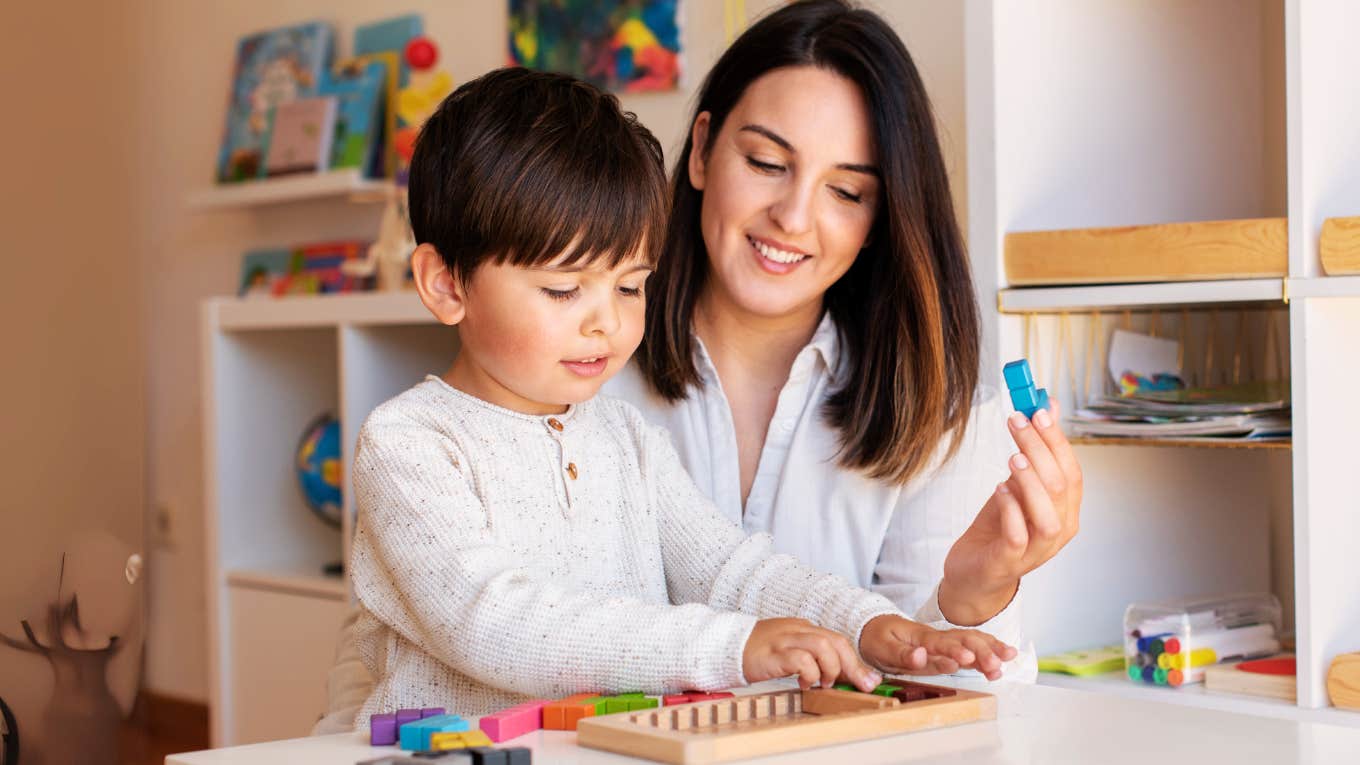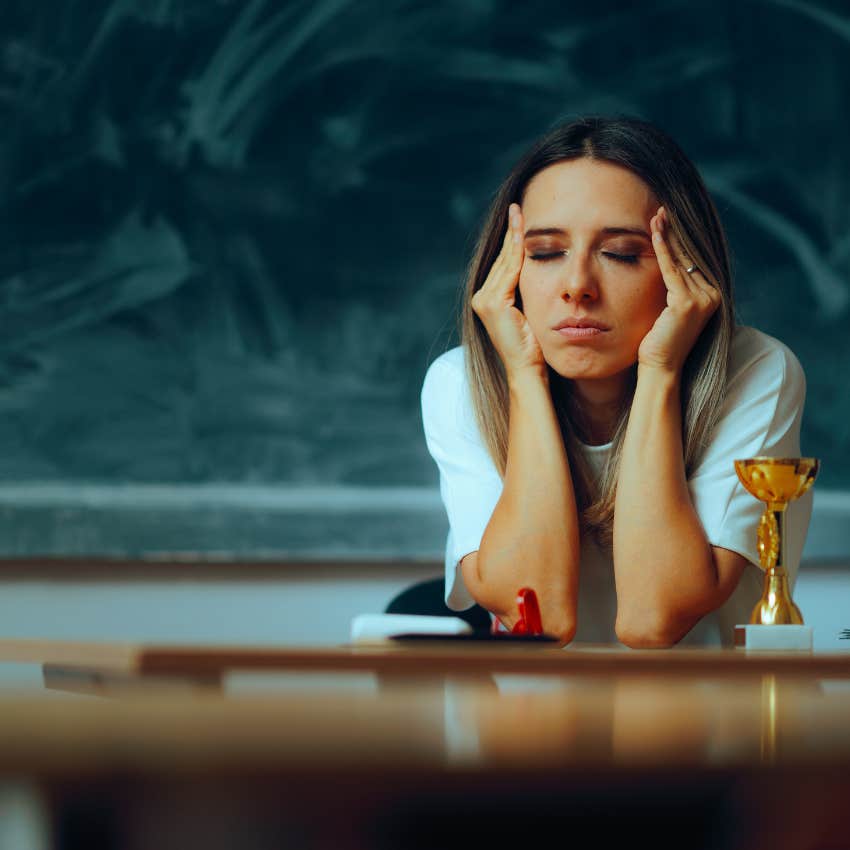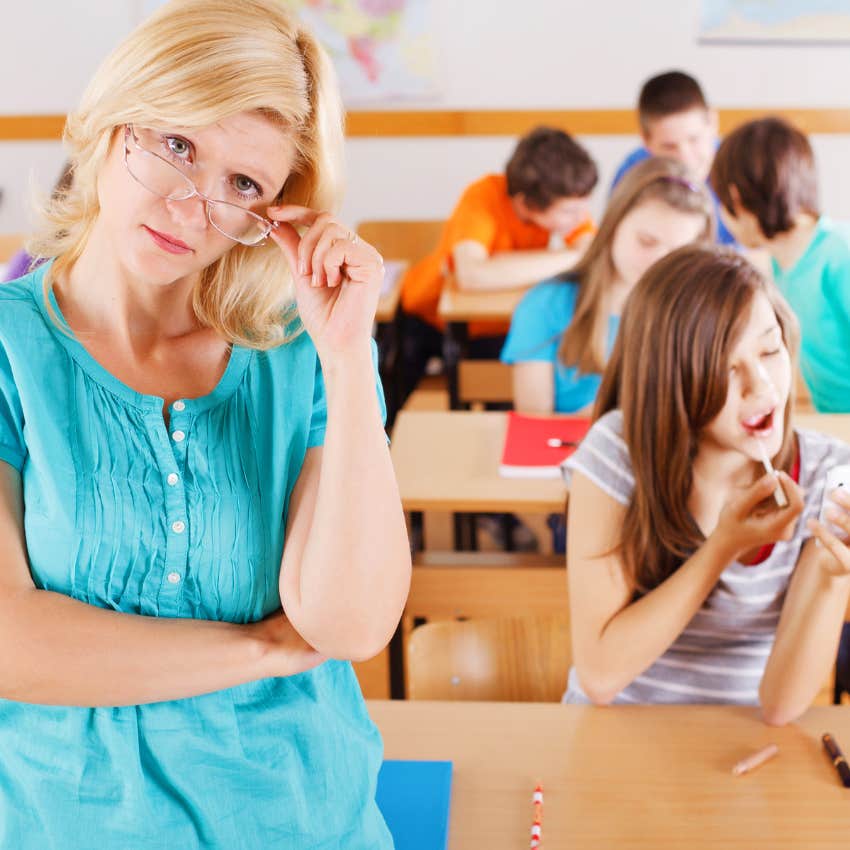I Was A Public School Teacher And Now I Homeschool My Kids — 'Education Is Built Around Conformity And Obedience'
After years in the classroom, I made a surprising choice for my own kids — here’s why I left the system to teach them at home.
 Trendsetter Images | Canva
Trendsetter Images | Canva By all measures, I should be a public school success story.
After 12 years of public education, I attended a prestigious, private liberal arts college and then went on to earn my Masters in Teaching. I returned to public school as a teacher, teaching for a decade at three different grade levels.
I taught elementary-aged children in a reasonably well-funded school district. Parents in our small university town were largely involved and supportive. Our schools were clean and bright. There were many days that I loved my job and that I was proud of the work we were doing as a school community. Even so, I didn’t want to send my children there.
Although I haven’t seen statistics about the number of public school teachers who turn to homeschooling for their own families, I can tell you that I run into former teachers frequently in the homeschooling community. Of course, not all former teachers who homeschool do so because of concerns about the state of public education.
Many of us simply love children and want to spend as much time as possible with our own. And yet, I think there is something to learn from a population that dedicated our early careers to a system that we ultimately rejected for our own families.
I believe in the critical importance of a strong system for public education. I don’t think that homeschooling is a good option for all families. The current system serves some children well, but I believe that we are under-serving or failing just as many.
It’s not the teachers
 Nicoleta Ionescu / Shutterstock
Nicoleta Ionescu / Shutterstock
In my experience, the issues faced by our public school system are not a result of classroom teachers. Teachers, despite being frequently maligned as low achievers who just want to work from 8 to 3 with summers off, are overwhelmingly dedicated public servants.
Most teachers work far past their contract hours. I used to work so late into the evening that I became friends with the night custodian at my school, who would watch to make sure that I got to my car safely in the dark.
Working in the early mornings, late evenings, and on at least one weekend day was fairly standard among teachers in our district, though no one was compensated for this time. Teachers are working harder than ever to prop up a collapsing system.
The issues surrounding public education are structural and systemic. In a way, this should make them easier to solve. But systems have momentum. Inertia can be powerful. Following is an exploration of the aspects of public education that I am glad to have left behind.
Too few adults in classrooms
In the US, we are committed to educating every child. More than in other countries, we end up with classrooms populated by learners with vastly different academic and social-emotional needs.
Our staffing has not caught up to our principles. Most teachers would tell you that classrooms could immensely benefit from additional support staff in each room.
In all of the years that I taught, I never had fewer than 26 children in a class and I also never had a single extra support person, such as a paraprofessional, to assist in targeting instruction to the vastly differing needs of those learners. Students left the classroom for special education or Title 1 services, but those programs operated relatively independently. When students were in my classroom, I was solely responsible for their instruction.
How much classroom time can you devote to helping a few struggling students before you move on for the good of the group? When you work with a small group of learners, how can you ensure that the rest of the class is efficiently using their time? We know how to keep kids busy, but are they truly learning? Kids who need extra practice at home often don’t have the support to complete homework assignments in a way that would be helpful.
The result is that, for all but a small band of learners, much of the academic work assigned is of questionable value. If the assignment is too challenging, students aren’t learning to their full potential. If the assignment is not challenging enough, it only serves as a review.
Teachers do their best to differentiate. However, differentiating every lesson and every assignment requires an amount of planning time that teachers often don’t have. As a result, the number of minutes of targeted instruction in a given day for a given child is often horrifyingly low.
Inefficient use of time
 SaMBa / Shutterstock
SaMBa / Shutterstock
We send our young people out of the house for at least 6 hours each day, at least 160 days each year. It is a massive chunk out of a child’s life. We have a responsibility to employ that time wisely. Why then, when you speak to teachers, do they feel that they have so little time to teach?
Classrooms are plagued by interruptions: drills, assemblies, birthdays, specialist classes, recess, illnesses, testing, holidays, professional development days, parent-teacher conferences, and school breaks. Young children bring instruction to a standstill when they throw tantrums and crawl under tables. Older students explode over difficult math problems.
Individuals come and go for Special Ed or Occupational Therapy. An announcement over the intercom interrupts the focus of students for several minutes afterward. Show me a well-crafted weekly lesson plan and I will show you a lot of unplanned interruptions that derail it. Many of these interruptions are themselves valuable, but they still have a massive impact on targeted instructional time.
The target is constantly moving
Our society needs to plot a course and stay on it when it comes to educational standards. In my state, every time a new Superintendent of Public Instruction came into office, standards would change. Textbook and curriculum companies would revise materials. Districts would implement pilot programs to test out the most promising new curriculum options.
Teachers would participate in professional development to learn the new standards and explore new materials. Prepping elementary curriculum involves endless hours of copying, cutting, and laminating. This trickle-down process inevitably took so long that by the time teachers were beginning to feel confident with an adopted program, a new Superintendent of Public Instruction would change it all up again.
I believe that an imperfect set of materials and standards used consistently and thoroughly, would be better for students than twelve more perfect programs administered in pieces and then abandoned.
We know the research, and then we ignore it
Despite the fact that we constantly move the target on teachers and students, we don’t seem to do it in meaningful ways. American public schools consistently and knowingly ignore abundant and clear research about children and their needs.
We know, for example, that the rapidly changing brains of teenagers need more sleep, as with young children experiencing similar processes. We know that teenagers physiologically struggle to fall asleep early. And yet, we start high schools early and add on zero-hour classes.
Young children need abundant time for play, but we impose standards that require more and more deliberate academic instruction at younger ages. We panic about test scores in older children, so we double down on academics for the young, ignoring the possibility that we may be doing them real developmental harm.
We know that children of all ages need downtime. We fill their days with school and their evenings with extracurricular activities. We pile requirements onto high school students, though we profess to be concerned about their mental health. Putting research into practice would require a cultural shift that we have not yet been ready to embrace.
Safety concerns
When we mention safety concerns at school, shootings rise to the forefront of the discussion. This is valid, but a reality that I don’t feel we discuss nearly enough is that several children at any school are predators themselves.
Sometimes these children have been the victims of child sexual abuse. Some childhoods are fraught with trauma, irrevocably changing the brains of young survivors. Some children are unable to feel empathy for those around them, through no fault of their own. It is heartbreaking, but it is also alarming for the children around them.
Particular areas of schools are relatively unsupervised, such as the restroom, the far end of the playground, and the back of the bus. Problematic things happen in these spaces. Children show one another pornography or violent content on their phones. Bullying still thrives, in many forms. Many students do not feel safe at school, and we have so few resources at our disposal to make them measurably safer.
Even in the supervised environment of the classroom, many students witness behaviors that no child should have to see. Most teachers have had the experience of needing to escort an entire classroom of kids out of the room because one child was so out of control that removing everyone else from the situation was the only safe choice.
One year, a troubled middle-grade child attempted to stab my hand, resting on his desk, with a pencil. Another student was arrested out of my classroom and subsequently turned over a filing cabinet when he arrived at the police station.
School safety goes beyond preventing gun violence. Behavior issues are generally an expression of unmet needs. Keeping students safer should involve training to help schools work with students who have experienced trauma.
It should involve hiring additional staff to meaningfully intervene with individual students without derailing everyone else in the classroom. We must more effectively supervise places where problematic behaviors occur. Children cannot learn to their full potential when they are anxious and afraid.
Culture of conformity and obedience
I don’t think I really appreciated the degree to which schools are built around conformity and obedience until I saw my own homeschooled children out in the wild. My children are respectful, but firm in their belief that they and others deserve to be treated fairly. They have little patience with adult figures in authority positions that use age and seniority as an excuse for poor behavior.
Peer pressure is helpful when you need to control large classes, but it is problematic when you need voices to speak out in concern or condemnation. Children who have been socialized to accept that adults in authority positions are always right may be more vulnerable to certain types of abuse. They may not report adults who are behaving inappropriately or criminally. Advocating for yourself and others is a skill that requires practice.
When we continue to place large numbers of children in one room with one adult, simply because they happen to be the same age, we find ourselves insisting on the type of compliance that keeps our classrooms under control but may not be best for society in the long run. We employ passive aggression and shame. There is little place in today’s classrooms for children who do things differently. If we want to cultivate out-of-the-box thinkers, we will need to stop shoving them in and closing the lid.
Lack of respect and value for the neurodivergent
When I started homeschooling, I was not yet aware that I was raising a house full of neurodivergent children. I published an extensive account about my experience as a traditional academic learner raising neurodivergent kids, but the short version is that I am now much more aware that schools are set up to reward a highly specific type of academic achievement. The very real strengths that neurodivergent brains offer our society are neither nurtured nor valued at a systemic level.
Neurodivergent children represent an at-risk population and we are largely failing them. The founding president of the Child Mind Institute, Dr. Harold Koplewicz, says in an interview with NPR, “When we look at the juvenile justice system, we see that 70% of the inmates have dyslexia.”
Dyslexia is an interesting example because it is often correlated with high IQ. When we understand the dyslexic brain, we see that gifts and challenges operate in tandem. Particular challenges are frequently associated with corresponding gifts. Those who struggle with letter reversals, for example, often display very strong spatial skills.
According to an article in the Harvard Business Review, “Many people with these disorders have higher-than-average abilities; research shows that some conditions, including autism and dyslexia, can bestow special skills in pattern recognition, memory, or mathematics.” In focusing only on remediation, we fail to nurture these strengths and gifts.
My future in public school education
My children are teenagers and I often think now about life after raising them. I could return to teaching, particularly as a teacher shortage spreads across the nation. I struggle with the idea.
Can I do enough good in a struggling system? Can I put aside my philosophical objections and work within the structure provided?
Homeschooling has not been a perfect solution, but I think it was the best choice for my family given the limited options available. Certainly, my children missed out on experiences, good and bad. Each of my children has had the option to enroll in public school at any time, but none of them have taken us up on it, each for their reasons.
I still believe in the need for a strong public school system. Private schools are good options for many families, but they will never fill the need met by a school that serves every child regardless of that child’s needs or financial status.
The challenges to our schools will not be solved by more testing, new educational standards, or more professional development. It is time for a sea change in the way we think about education, in the way we fund and staff schools, and in our priorities as a nation when it comes to the children we nurture. I’m here for it, when we are ready.
Maggie Monroe earned her Masters in Teaching, worked as a public school teacher for a decade and now educates her three children at home. Many of her essays appear in publications on Medium and she has a book about modern homeschooling in the works.

